Mid-Length VS. Hybrid Mid-Length Wingfoil Board
- Posted on
- By Ryan "Rygo" Goloversic
- Posted in Hybrid mid-length wingboard, Mid-length wingboard, Midlength wingboard, Wingfoi, wingsurf
- 0
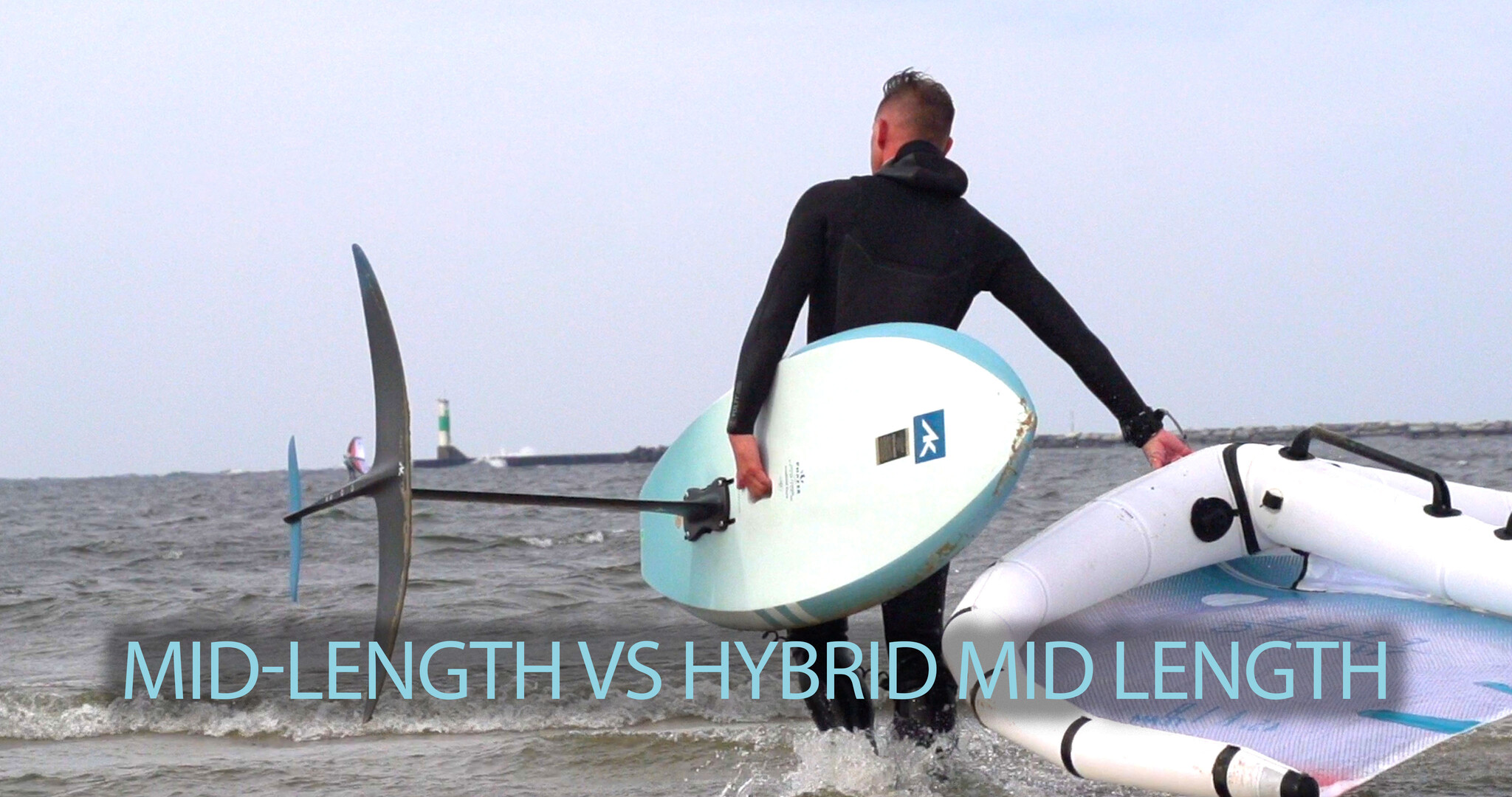
Choosing the Right Wingfoil Board for Inland Lakes or Gusty Conditions
Mid-length and hybrid mid-length boards offer unique advantages when looking for the right wingfoil board, especially for gusty or unpredictable conditions. The question is, which will be a good fit for you? What are the advantages of this new style of board?
In this blog, we’ll explore the differences between mid-length wingboards and hybrid Mid-length wingboards.
Two of our favorite options are the AK Durable Supply Co. Nomad and the AK Phazer. We’ll reference these two boards often to help you understand how each style performs in gusty wind, choppy water, and low-power waves, making them ideal for inland lakes or coastal spots with minimal surf.
Table of contents:
- What are Mid-Length Wingboards Good For?
- Whats the Best Mid-Length Wingboard For Beginners?
- What are Hybrid Mid-Length Wingboards?
- The Benefits of Mid-Length Wingboards in challenging conditions.
- What Mid-Length Wingboard Should I Get?
- Whats the Best Mid-Length Wingboard for Lakes?
- Faq about Mid-Length Wingboards?
What are Mid-Length Wingboards good for?
Mid-length boards are built for speed and efficiency, making them the go-to choice for riders who need a board that can handle gusty wind, light wind, or minimal wave power. Their long, narrow shape and hydrodynamic design give them excellent take-off speed and acceleration, which becomes invaluable in inconsistent or light wind conditions.
The magic is their efficacy to gain speed and release from the water. Once you break the surface tension on the water, you can tap into the power of the hydrofoil you use. The challenge is like most trends in wingfoil: advanced riders lead the conversation and often lead beginner riders down the wrong path.
A good example would be the trend of high-aspect hydrofoils. They are the best, of course, but they are too difficult for a beginner wing foiler. This is now happening with Mid-Length boards. Some are easier than others, and there are different categories of mid-lengths.

Whats the best mid-length wingboard for beginners?
The AK Nomad exemplifies the qualities you would expect from a great mid-length. Its shape is crafted specifically for high speed and easy gliding to take off fast. This board shines in gusty, inland lake conditions where steady wind can be rare. In such situations, the Nomad’s ability to maintain momentum and recover from dips in wind strength makes it the ideal board for those who want reliable rerformance in unpredictable wing or chop.
Moreover, the Nomad’s elongated design and fast hydrodynamic hull make it a prime choice for catching "gutless" waves with little power by harnessing hydrofoil technology. The magic of hydrofoiling lies in transforming low-energy waves into a surfable experience, and the Nomad’s speed allows it to catch even small rolling waves easily.
This board’s fast take-off and low drag mean that even rolling, non-breaking waves become accessible, bringing a thrilling surf feel to previously impossible locations. The reason we love this board so much is the accessible Performance. You get all the good of any mid-length but there is a touch more stability to the Nomad compared to other mid-lengths.
This is a trend we found consistent throughout the Ak range of boards and foils. The whole range of boards and foils aim to bring the highest level of performance but are accessible to riders of all levels. The Nomad is still a better fit for lower-intermediate to advanced riders to a fault. The Phaser is a hybrid mid-length that fills the gap for true beginners and so much more.
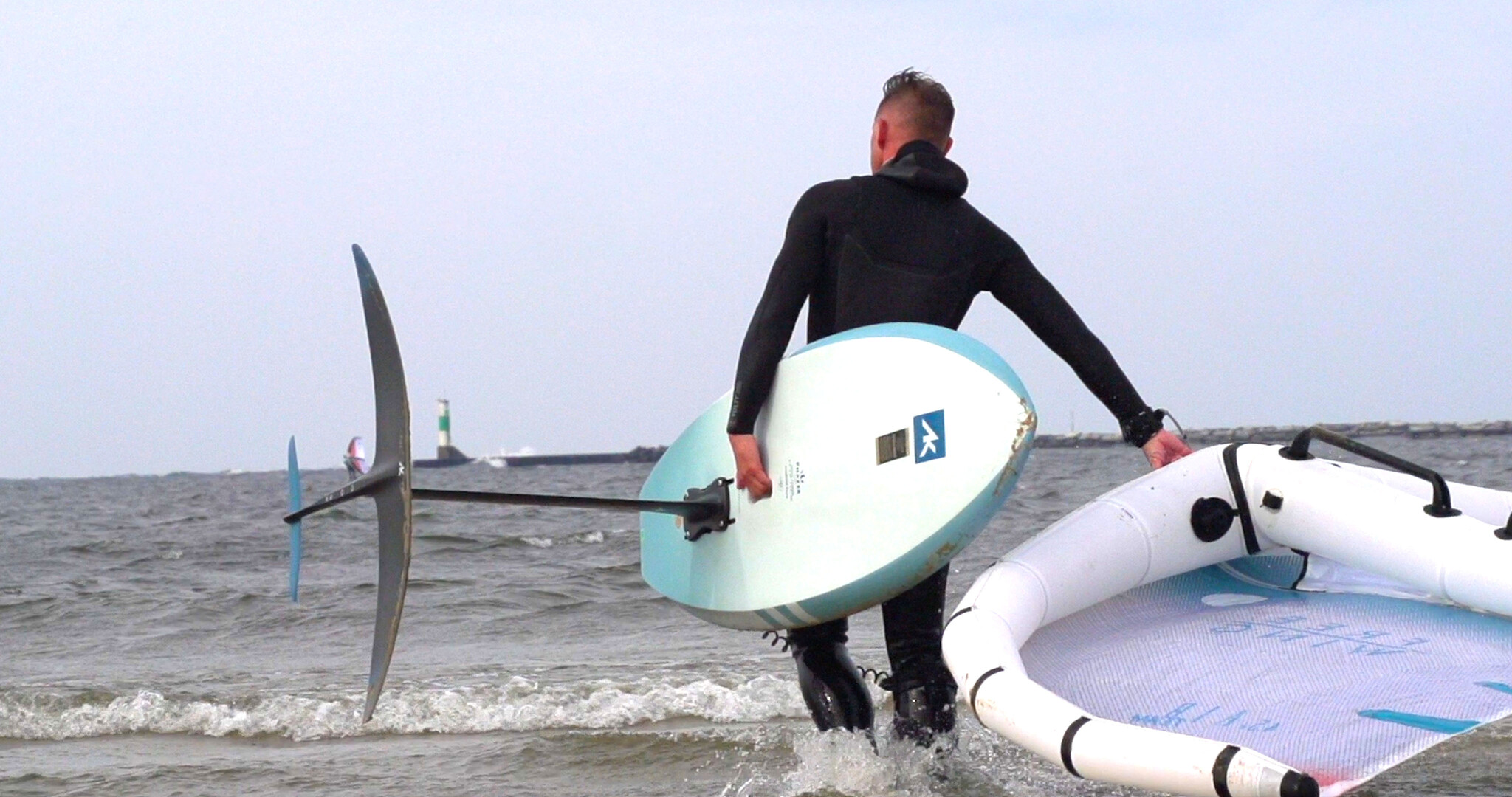
What are Hybrid Mid-Length Boards?
There is only one Hybrid mid-length board right now. That is the Phazer - a first of its kind; it provides a balance of stability and speed, allowing riders to experience mid-length efficiency while maintaining control in less-than-ideal conditions. The AK Durable Supply Co Phazer is an exceptional example of a hybrid well-suited to beginners and intermediates facing gusty winds or choppy water. We fell in love with this board from our first test in Hood River two years ago on the previous generation. It was ahead of its time in terms of speed and take-off.
We have access to excellent oceanfront riding in Cocoa Beach, but many of our spots on the Banana River can get gusty. Some wind directions are pretty wild. We found that with inland lake conditions, which are often gusty and unpredictable, the Phazer’s quick take-off and stability provide a forgiving experience without sacrificing speed. While not as fast as a true mid-length, the Phazer is more stable and forgiving, which is crucial for riders encountering sudden gusts or wind holes.
Its design allows for a stable, balanced ride with enough speed to maintain control during touch-downs, making it easier to recover if the board drops off the foil due to inconsistent wind. This is a true all-around wingfoil board with some mid-length benefits.
We get to try wingboards in a varety of conditons with the ocean or the rivers here. We found that in weak or "gutless" waves, the Phazer’s speed and paddle power also come into play for prone surf foiling. The board’s design helps riders catch rolling swells, making it possible to enjoy a powered surf experience even in waves that lack the strength of a classic beach break.
The larger Phazer models, with their sharp rails, offer a track-like feel that helps beginners stay in control during touch-and-go riding, while the rounded rails on smaller models allow for smooth, easy turning on gentle waves or flat water. The Phazer’s flexibility in different conditions makes it ideal for surfers looking to branch out into wingfoiling in less powerful surf spots.
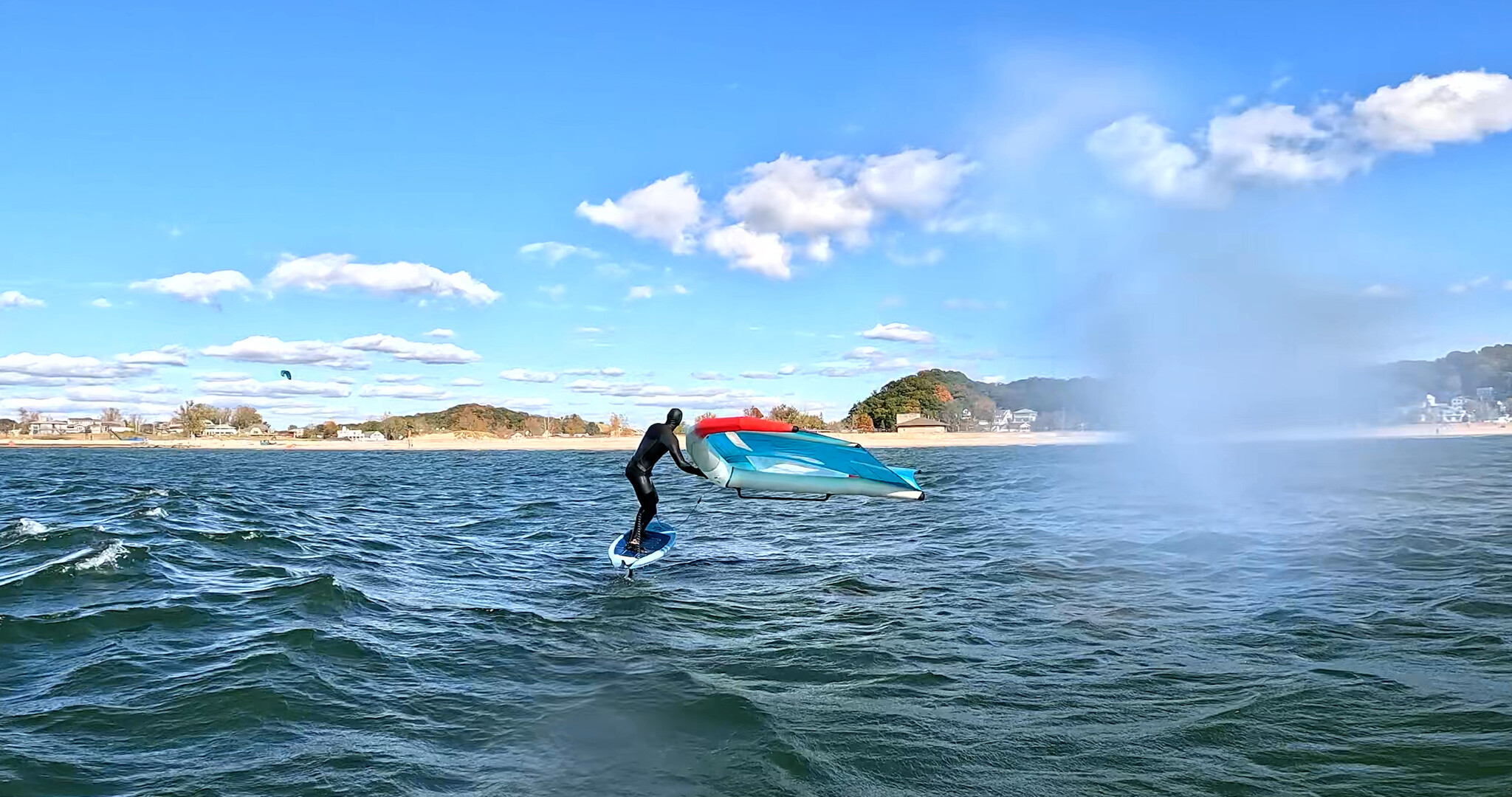
The benefit of mid-length wingboards in challenging conditions
Both the Nomad and the Phazer offer unique advantages that enhance their Performance in tough conditions:
Handling Gusty Wind in Inland Lakes: Inland lakes often have unpredictable, gusty wind patterns that can make foiling challenging. Both the Nomad and Phazer make up for these gaps in wind with their speed and efficient take-off capabilities. The Nomad’s narrow, elongated hull glides easily, maintaining speed even when the wind is inconsistent. The Phazer, while not as fast, provides greater stability, making it easier for newer riders to stay balanced and recover in between gusts.
Riding Gutless Waves with Ease: The beauty of hydrofoiling is being able to ride weak, rolling waves that traditional surfboards struggle with. Both the Nomad and Phazer enable riders to catch these types of waves, offering a powered surf experience on minimal swells. The Nomad, with its speed, can catch low-energy waves with minimal paddling, while the Phazer’s stable design makes it easy to paddle into weak waves and stay on them.
Recovering from Touch-downs: Touch-downs—when the board briefly hits the water while riding—are common in variable conditions. The Phazer’s stability is a huge asset, allowing riders to bounce back and regain control quickly. The Nomad, with its fast acceleration, also supports quick recovery from touch-downs, keeping the ride smooth and uninterrupted.
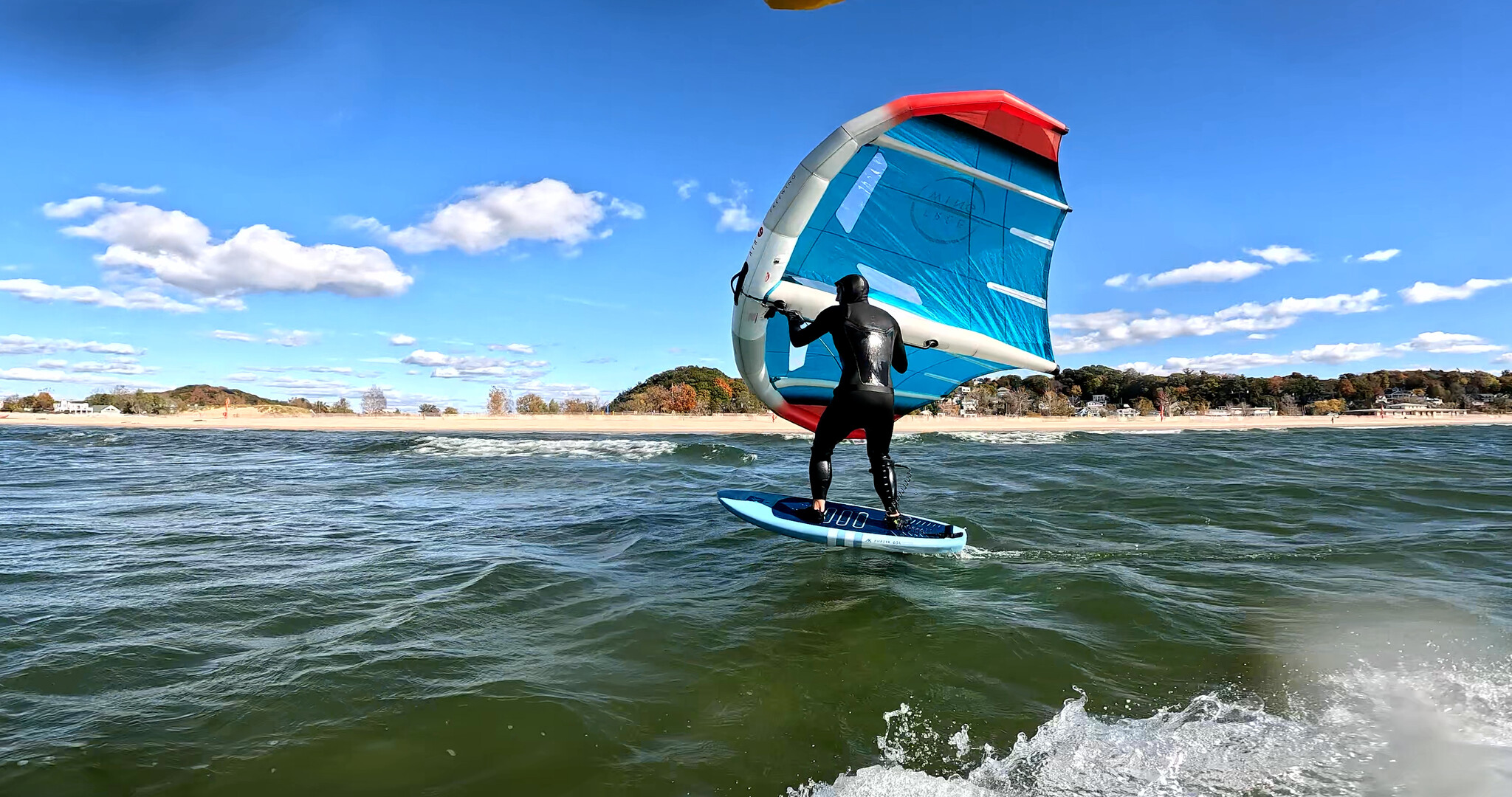
What mid-length wingboard should I get?
Both the AK Nomad and AK Phazer are solid choices for challenging environments, but the best choice depends on your experience level and the specific conditions you’ll face.
For Beginners: The Phazer is ideal, offering stability and ease of use in a variety of conditions. It’s forgiving in gusty wind and provides excellent control for touch-and-go riding, allowing you to grow your skills with confidence.
For Intermediates: Either board can work well, depending on your goals. If you’re looking for a board that performs in light wind and minimal swell, the Nomad offers advanced speed and efficiency. The Phazer, however, is an all-arounder that’s great for wave riding, freestyle, and flat water.
For Advanced Riders: The Nomad or similar mid-lengths will likely be the best choice, especially if you prioritize speed and efficiency. Its hydrodynamic design and fast acceleration make it ideal for light-wind days and challenging conditions, providing the control needed to turn difficult sessions into enjoyable ones.
Whats the best mid-length wingboard for lakes?
In gusty inland lakes, choppy waters, or weak waves, both the AK Nomad and AK Durable Supply Co Phazer offer unique benefits that can elevate your wingfoiling experience. The Nomad’s speed and efficiency make it a powerhouse for advanced riders seeking maximum performance in low-wind conditions, while the Phazer provides a stable, versatile platform that’s forgiving yet capable of handling all skill levels.
Pick the board that aligns with your goals and riding environment; you’ll be ready to tackle a wide range of conditions, making every session as fun and productive as possible. Whether you’re just beginning or looking to push the limits in unpredictable conditions, there’s a mid-length or hybrid mid-length that will help you make the most of every moment on the water.

FAQs for Choosing Between Mid-Length and Hybrid Mid-Length Boards
What’s the best board type for a true beginner on low-wind lakes?
- For beginners in low-wind conditions, starting on a more stable hybrid mid-length, like the AK Phazer, can be beneficial. Hybrid mid-lengths offer stability and ease of use, which are crucial in learning and managing low-wind. These boards strike a balance between stability and speed, allowing beginners to learn water starts without being overly challenging.
If I plan to upgrade my gear gradually, should I replace my board or my foil first?
- It really depends on your current equipment. Upgrading your foil first can make a big difference, especially if you choose a large high-aspect foil like the 2050 Plasma. A more efficient foil will improve your ability to lift in lighter winds, allowing you to maximize the capabilities of your current board. Once you’re comfortable with your new foil, upgrading to a more efficient or performance-oriented board, like a mid-length, can be the next step. In this case, we recommend pairing this with a light wind specialty board like a larger 95L, 115L, or even 135L Nomad.
Would a mid-length board help me improve my jibes?
- Yes, a mid-length board can offer more speed on touch-downs and assist in perfecting maneuvers like jibes. The increased glide and smooth take-off of a mid-length board allow for more forgiving transitions, giving you extra time to stabilize. Practicing with a mid-length may improve your jibes by helping you learn to maintain balance during turns.
Is there a downside to choosing a downwind board for everyday winging on an inland lake?
- Larger downwind boards are highly efficient for light wind and long-distance rides but may lack the maneuverability that some riders prefer for high-wind or wave conditions. If you’re planning to ride in both light and stronger winds, a hybrid or mid-length board can be a more versatile choice for maneuverability while still offering some low-wind performance.
What are the pros of a hybrid mid-length in gusty inland lake conditions?
- Hybrid mid-length boards, like the Phazer, perform well in gusty inland lakes due to their balance of speed and stability. Their design helps riders bridge gaps in wind strength more easily than wider boards. These boards also allow quick take-offs, essential in gusty conditions, and reduce the struggle to stay balanced when wind conditions are less consistent.
How does volume affect board choice for light wind days?
- Higher volume in a wingboard provides more buoyancy, which is useful for light-wind days or when you need to paddle back in low wind. If you’re looking for stability, especially in a downwind board, choosing a board with at least 10–15 liters more than your body weight can help. However, hybrid mid-lengths with slightly reduced volume can still offer buoyancy without sacrificing speed or efficiency.
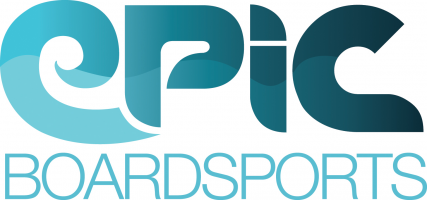
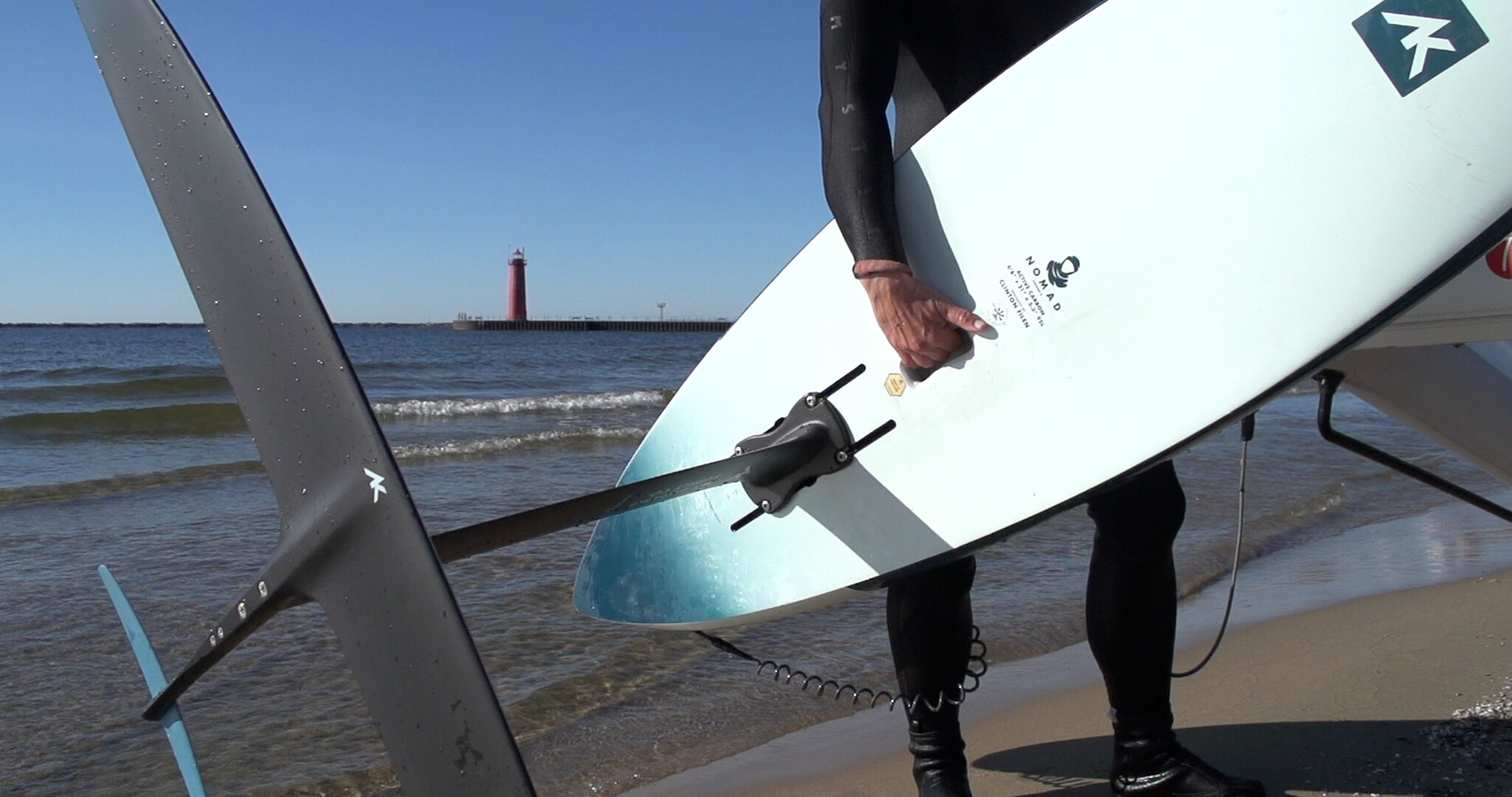
Comments
Be the first to comment...